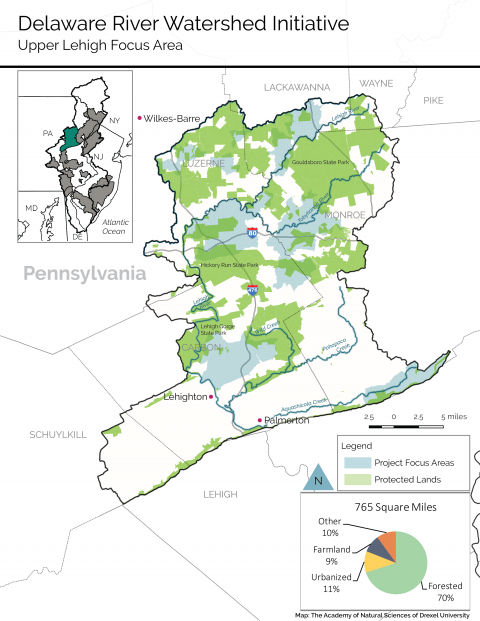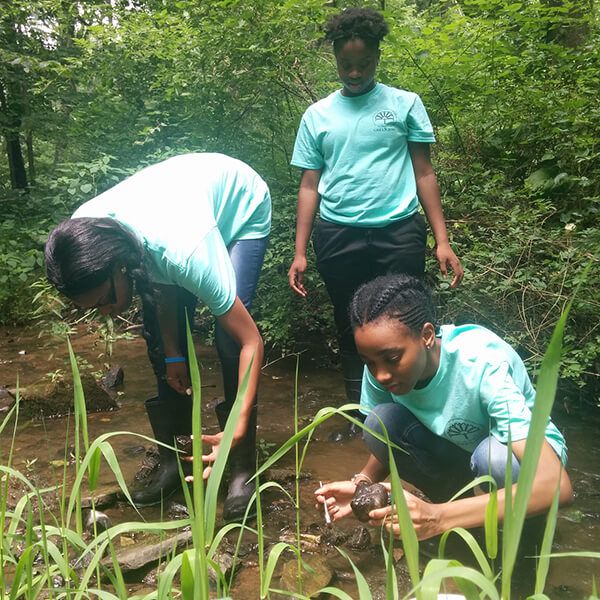The Lehigh River originates from glacial bogs deep in the Pocono Plateau and then winds its way 103 miles through Pennsylvania’s Lehigh Valley before connecting to the Delaware River in the city of Easton. The upper reach of the Lehigh is one of Pennsylvania’s official Scenic Rivers, and the Lehigh Gorge is renowned for its spectacular scenery and whitewater. Key tributaries of the Lehigh River such as Aquashicola Creek, Drakes Creek, Mud Run and others tend to flow along the folds of the Appalachian Mountains known as the Ridge and Valley province.
Valuable wetlands exist in this cluster, covering approximately 35,000 acres. This region, which has been a conservation priority for more than a century, contains some of the best forests and gamelands in the state. Over the past several decades, the Lehigh’s water quality has improved dramatically. Pennsylvania classifies more than 20 percent of stream miles in the Upper Lehigh as Exceptional-Value waters, and an additional 46 percent as High-Quality cold water fisheries. Approximately 400 miles of Class-A streams harbor self-sustaining trout populations. Seventeen stream miles in the cluster are classified as wilderness trout streams. Improved environmental conditions have provided people with new and ever-expanding opportunities to connect with the river, as evidenced by the number of rafting and paddling outfitters and charter fishing companies operating in the Upper Lehigh.



